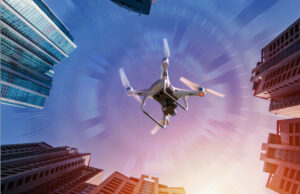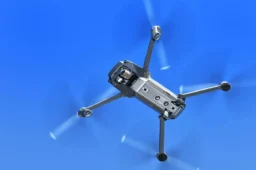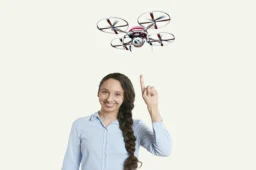
How High Can a Drone Fly
How High Can a Drone Fly? Drones, those ubiquitous whirring wonders, have revolutionized aerial photography, delivery, and even warfare. But how high can these marvels of technology actually fly? The answer, like a well-executed drone shot, involves layers of factors and considerations. Buckle up, aviators, as we explore the thrilling heights drones can reach, the regulations that ground them, and the future skies they may conquer.
Legal Limits: Where Drones Hit the Ceiling
Before we unleash our inner Maverick, let’s acknowledge the air traffic control tower of regulations. In most countries, including the US, recreational drones are restricted to a maximum altitude of 400 feet (120 meters) above ground level. This ensures safety for manned aircraft and minimizes the risk of mid-air collisions. Exceeding this limit can result in hefty fines and even criminal charges.
Technical Capabilities: How High Can Your Drone Climb?
Regulations establish the floor, but what about the ceiling? This depends heavily on your drone’s capabilities. Toy drones might sputter at a few hundred feet, while professional models boast ranges exceeding 6,000 feet (1,800 meters). Factors like motor power, battery life, and aerodynamics all play a role. Remember, the higher you fly, the thinner the air, demanding more power and potentially limiting control range.

Pushing the Boundaries: The Drones Defying Gravity
While 400 feet is the standard for hobbyists, some drones break free from these shackles. Military drones soar at altitudes exceeding 30,000 feet (9,000 meters), gathering intelligence and conducting operations. The Zephyr, a solar-powered marvel, holds the record for the highest drone flight at a staggering 76,100 feet (23,200 meters)! These specialized machines prioritize endurance and utilize unique designs for high-altitude performance.
The Future of Flight: Higher Horizons Await
Drone technology is constantly evolving, and the sky’s the limit (almost literally). Advancements in battery technology, miniaturization, and autonomous navigation could see drones routinely operating at higher altitudes for tasks like search and rescue, environmental monitoring, and even intercity package delivery. However, regulations will need to adapt alongside technology to ensure safety and responsible integration into airspace.
In meters, how high can a drone fly?
Regulations:
- Location: Every country and region has specific drone regulations, and the maximum flight altitude is a crucial aspect. In many places, including the US and Europe, recreational drones are limited to 120 meters (400 feet).
- Drone category: Some regions categorize drones based on weight and purpose. Higher categories, often requiring licenses and permits, may allow flights exceeding 120 meters under controlled conditions.
Drone capabilities:
- Technical specifications: Each drone model has its own maximum operating altitude determined by its motor power, battery life, and control range. Entry-level consumer drones might struggle above 300-500 meters, while high-end models can reach several thousand meters.
- Weather conditions: Wind, temperature, and air pressure can significantly impact a drone’s performance and limit its achievable altitude.
Special cases:
- Research and development: Specialized drones designed for scientific research or military applications can push the boundaries, with some reaching tens of thousands of meters (e.g., Zephyr drone at 76,100 feet).
- Controlled environments: Indoor drones for racing or entertainment may operate far higher than 120 meters within controlled, enclosed spaces.
Therefore, the most accurate and expert answer requires:
- Specifying your location: Knowing your country or region allows me to reference the relevant regulations and their altitude limits.
- Describing the drone: Providing details like its model, category, and intended use helps assess its technical capabilities and potential altitude limitations.
- Considering the purpose: Knowing if you’re interested in legal limits, typical performance, or extraordinary examples like research drones will guide the answer’s focus.
How far can a drone fly from the controller
1. Drone Type:
- Toy drones: 20-100 meters (limited by Wi-Fi or basic radio signal)
- Consumer drones: 1-7 kilometers (depending on model, technology, and regulations)
- Professional drones: 10-20 kilometers (equipped with stronger signals and longer battery life)
- Military drones: Hundreds or even thousands of kilometers (advanced technology and long-range capabilities)
2. Signal Technology:
- Wi-Fi: Short range (suitable for indoor or close-proximity flying)
- Radio: Longer range (varies depending on frequency and power)
- Cellular: Extended range (limited by network coverage and regulations)
- Satellite: Global range (for highly specialized applications)
3. Environmental Conditions:
- Line of sight: Crucial for maintaining signal strength, obstructions can significantly reduce range.
- Weather: Wind, rain, and interference can impact signal quality and stability.
- Regulations: Many countries have restrictions on drone flight distance, often tied to line-of-sight or specific zones.
4. Specific Drone Model:
Providing the exact drone model you’re interested in allows for a highly specific range estimate based on its technical specifications and user reviews. Additionally, considering your intended use case (e.g., photography, mapping, inspection) helps narrow down suitable options with appropriate range capabilities.
So, how high can a drone fly?
It depends. Legally, 400 feet is the standard for most. Technically, some drones can reach dizzying heights. And in the future? The sky might not be the limit after all. Remember, responsible flying is paramount, regardless of altitude. Always check local regulations, respect airspace restrictions, and fly with safety in mind. Happy droning!





